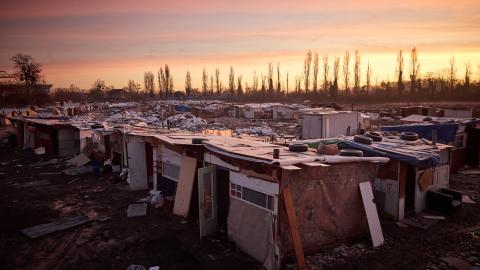The Roma arrived in Europe hundreds of years ago from present-day Rajasthan in northern India—and they still aren’t welcome in many quarters. For centuries their lot has been hatred and prejudice, persecution and poverty. They have been enslaved and oppressed, expelled from some countries and marginalized in others.
Today there are an estimated 10 million to 12 million Roma scattered throughout Europe, where they are sometimes called the Continent’s largest ethnic minority. Until recently, they were known as Gypsies, a now mildly offensive term coined several hundred years ago in the erroneous belief that the dark-skinned foreigners had come from Egypt. The word “rom” means “man” or “husband” in the Romani tongue, a language related to Sanskrit.



















